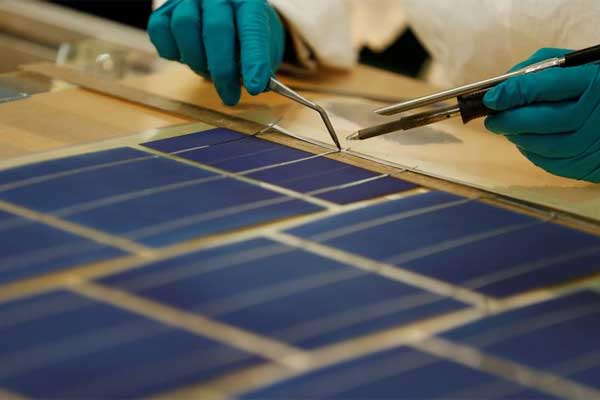Heliene, a Canadian manufacturer of solar panels, has outlined its ambitious plans for a significant expansion of its American manufacturing facilities.
The company aims to construct a brand-new factory in Minnesota, capable of producing both solar modules and cells, as detailed in an exclusive interview with Reuters by Heliene’s CEO.
Heliene, already possessing solar panel manufacturing operations in both Iron Mountain, Minnesota and Ontario, Canada, joins a growing list of companies dedicated to boosting U.S. solar production.
This increase in domestic manufacturing commitment is primarily due to President Joe Biden’s Inflation Reduction Act, introduced last year.
The Act, designed to stimulate the production of clean energy equipment domestically, provides tax incentives to both manufacturers and purchasers.
Heliene’s new factory, projected to cost around $145 million and located in the Minneapolis-St. Paul area, will have the capacity to produce roughly one gigawatt of modules and 1.5 gigawatts of cells annually, according to CEO Martin Pochtaruk.
These plans for Heliene’s growth and development, which were previously unreported, are viable due to a substantial investment by the New York-based Orion Infrastructure Capital (OIC).
The fund has invested $5 million in equity into Heliene, and an additional $150 million in credit towards the new facility, marking Heliene’s first-ever equity raise.
Founded in 2010, Heliene has thrived as a family-owned business.
“These are significant investments,” CEO Pochtaruk emphasized, highlighting the magnitude of the development. An OIC spokesperson disclosed that since the passage of the Inflation Reduction Act, the firm has been exploring possible investments within the domestic solar supply chain. They were attracted to Heliene due to its robust customer base and seasoned management team, which have navigated the company through the challenging U.S. market, where local panel makers vie against cheaper imports.
I interviewed Heliene CEO Martin Pochtaruk around a year ago:
While Heliene is still in the process of identifying a location for its new facility, production is expected to commence by 2024 for modules and 2025 for cells. This marks the company’s inaugural venture into cell production.
The Inflation Reduction Act includes a bonus 10% tax credit for projects where 40% of the components are manufactured within the United States.
Given the substantial role of cells in solar panel production, Heliene’s move into cell manufacturing is strategic. As of now, the U.S. lacks a domestic supply of polysilicon-based cells.
Heliene’s announcement comes on the heels of similar plans by Italy’s Enel and South Korea’s Hanwha to establish solar cell manufacturing operations in the U.S.
In addition to expanding into cell manufacturing, Heliene is actively seeking domestic sources for other panel components. This is intended to help their clients qualify for the bonus tax credits under the IRA, according to Pochtaruk.










Comments